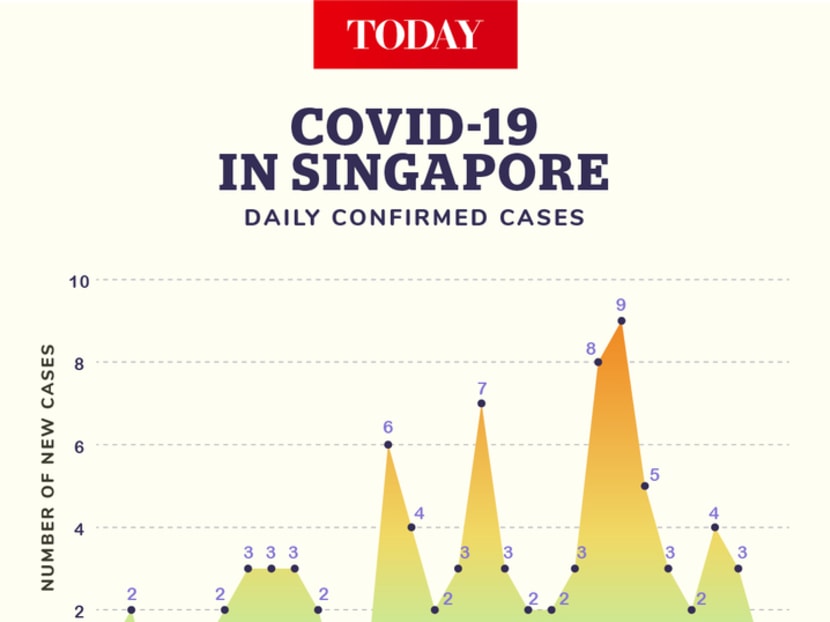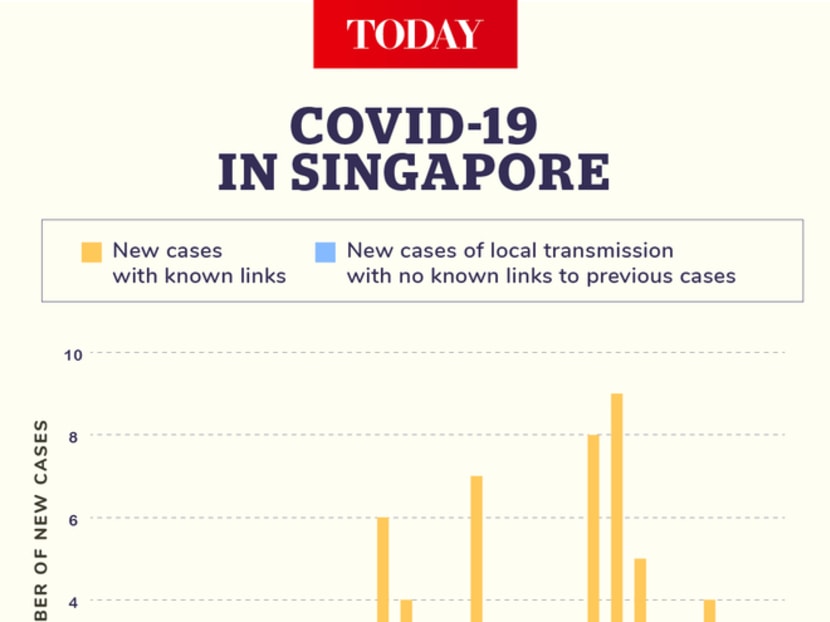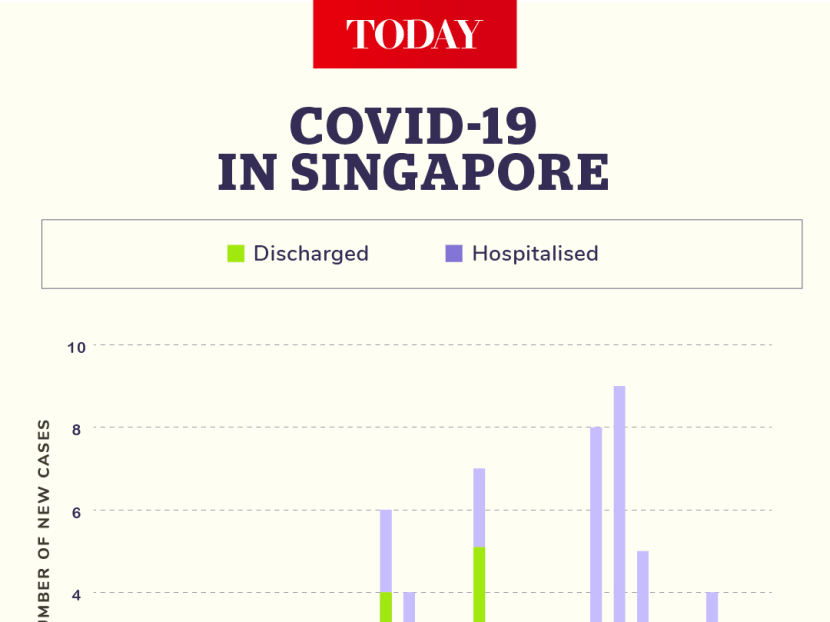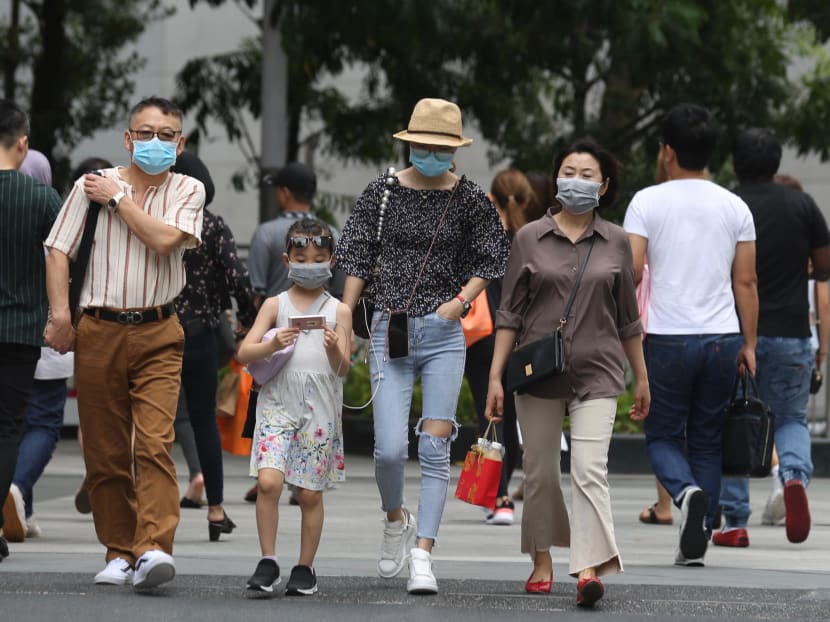Covid-19: ‘Too early to say worst is over’ — downward trend in S’pore but experts worry about imported cases from outside China
SINGAPORE — Although it is still far too early to say the worst is over, the Covid-19 outbreak appears to have tapered off in Singapore in the past week, several experts said on Friday (Feb 21), four weeks after the coronavirus was first confirmed here.
SINGAPORE — Although it is still far too early to say the worst is over, the Covid-19 outbreak appears to have tapered off in Singapore in the past week, several experts said on Friday (Feb 21), four weeks after the coronavirus was first confirmed here.
However, there is a growing concern that further cases of the infection could arrive from countries outside China and disrupt this recent positive streak, four infectious health diseases experts said in giving their take on the broad Covid-19 picture to date.
Since the peak of confirmed cases a week ago, when nine cases were confirmed here in one day, Feb 14, experts noted that the number of new cases detected has fallen steadily, although there is no way to be certain that another surge will not happen.
On both Thursday and Friday only one new confirmed case of Covid-19 in Singapore was reported by the Ministry of Health (MOH).
On Wednesday, three cases were reported, including a 57-year-old woman who had initially been admitted to hospital for dengue fever. It was later confirmed she had both Covid-19 and dengue.
No new clusters of local transmission have been detected for several days and most of the latest cases can all be traced back to earlier ones. A large number of patients confirmed with the disease have been discharged from the hospitals where they had been isolated.
“The hysteria will quieten down in the next month unless something unexpected happens," Professor Tikki Elka Pangestu, a visiting fellow at the Lee Kuan Yew School of Public Policy and a former director of the World Health Organization’s (WHO) research policy and co-operation department in Geneva told TODAY.
"But, as I have said, the virus will most likely remain in the population. In my view? Normalise everything and learn to live with the virus,” he added.
Recent reports from China, where the disease Covid-19 originated, have suggested that new transmission of the virus that causes it, Sars-CoV-2, has also fallen dramatically over the last few days.
Referring to this trend, WHO director-general Tedros Adhanom Ghebreyesus had said that Chinese data “appears to show a decline in new cases’’ but noted that any apparent trend “must be interpreted very cautiously”.
Using data made available by the Singapore MOH, TODAY looked at how the pace of the Covid-19 outbreak has changed over the past four weeks since Case 1, a 66-year-old Wuhan resident who arrived in Singapore on Jan 20 and was confirmed with the disease on Jan 23.
DOWNWARD TREND IN THE NUMBER OF CASES IN PAST WEEK

Looking at the daily number of confirmed cases, the Covid-19 situation appears to have slowed in the past week, with a sharp drop in the number of cases from the record of nine on Feb 14 to one confirmed case on Friday.
Dr Leong Hoe Nam, an infectious diseases specialist at Mount Elizabeth Hospital, said it looks like the number of cases found on Feb 13 and 14, mostly arising from the Grace Assembly of God cluster, appears to be the peak of the outbreak in Singapore.
"The number of cases is coming down,” said Dr Leong.
He noted that Singapore has been doing hundreds of polymerase chain reaction (PCR) tests per day — the test used to detect Covid-19 — and these cases must be seen in that context.
“This means that we are truly looking for a needle in the haystack, which means the number of cases is truly low. There are very few, if not no cases of active transmission in Singapore,” he said.
Agreeing with Dr Leong, Dr Pangestu said that the supposed peak outbreak here on Feb 14 is consistent with earlier scientific models that predicted that the number of new infections of the Covid-19 virus would peak in mid to late February. Chinese scientist Zhong Nanshan, the eminent 83-year-old epidemiologist who had discovered the Sars (severe acute respiratory syndrome) virus, had given the same prediction as well.
One study by the London School of Hygiene and Tropical Medicine had predicted a February peak based on the basic reproductive number of Covid-19, which is the expected number of cases directly generated by one patient. For Covid-19, this number averages between 1.5 and 4.5.
Biostatistician Alex Cook, who is the vice dean of research at the Saw Swee Hock School of Public Health, said it is “certainly a good thing that the number of cases has been going down”.
“(This falling trend) reflects the cases to identify and be isolated, and the efforts of MOH to conduct contact tracing, and healthcare workers to minimise infection in hospitals,” said Associate Professor Cook, who is the domain leader for biostatistics and modelling at the school.
His colleague, Associate Professor Hsu Li Yang, the school’s programme leader of infectious diseases and the co-director of global health, added that the fall in the number of confirmed cases in the past week indicates that Singapore’s efforts have been successful in limiting the spread of Covid-19.
“It is likely that current massive contact tracing — initiated right at the start of the outbreak in Singapore — has led to the majority of cases being uncovered. Current quarantine and social distancing measures have also worked to reduce transmission in Singapore,” said Assoc Prof Hsu.
FEWER NEW PRIMARY CASES DETECTED IN RECENT WEEKS

A key indicator is the number of primary cases found on a given day — patients who have had no known link to previous cases and could have contracted the virus through local transmission.
Singapore upgraded its Disease Outbreak Response System Condition (Dorscon) alert level to Orange on Feb 7 when it discovered another three such primary cases, including Case 32, a Victoria Junior College teacher who had no recent travel history to China and no known link to the earlier cases.
While finding these primary cases helps the authorities discover new ones through contact-tracing, they also highlight that there are more unknowns about how the Covid-19 situation is spreading in the community, said experts.
But in the past week, no new cluster and fewer primary cases have appeared. The exceptions are the recently discovered Case 82, a 57-year-old Singaporean who had contracted both dengue and Covid-19, and Case 85, a 35-year-old Chinese national who did not travel to China recently.
As these cases were confirmed only recently, a link could be established later when more detailed contact tracing has taken place.
Commenting on this trend of fewer primary cases in the past week, Prof Pangestu said he hoped this would help to calm the public.
While it could also mean that potential primary cases are still hidden from view, it is unlikely as the Singapore Government has been “very vigilant” in contact tracing. The trend shows that infected people have been effectively detected, isolated and treated.
“It’s the nature of these epidemics — they start explosively and then run out of steam as public health measures kick in and the virus runs out of susceptible hosts.”
Dr Leong noted that with Singapore expanding its case definitions to screen all patients with pneumonia for Covid-19, it is unlikely that cases would fall under the radar.
But Singapore’s strengths in contact tracing will still be limited by the ability for patients to recall where they have been and with whom they have interacted, which could account for those cases with no known links, he said.
“Lousy recollection means lousy contact tracing, which leads to lousy curtailment. We need to think out of the box,” said Dr Leong, suggesting that there should be a mobile phone application that is able to help build Singapore’s capability in contact tracing in future.
LARGE PORTION OF EARLIER CASES DISCHARGED

Experts also noted that a majority of the cases detected in the first two weeks of the outbreak have been discharged, a trend that is similar to the experience in other countries. This high rate of discharges is also a sign that the Covid-19 situation is improving in Singapore.
As of Friday, 47 out of the 86 cases have fully recovered from the infection and have been discharged from hospital. The number of cases in critical condition — five currently — has also come down.
The number of discharged cases does not include Covid-19 patients who do not suffer from any symptoms throughout their infection but are still hospitalised.
Assoc Prof Hsu noted that in this regard, data published out of China and other countries has been similar.
“Covid-19 infections are mild for more than 80 per cent of patients, which means these patients would not have needed hospitalisation based on medical needs alone. The patients were kept isolated in hospital to minimise the risk that they would spread the virus to others in the community,” he said.
While there is no known vaccine for the disease yet, in Singapore and elsewhere, Covid-19 patients are treated with a mix of antiviral drugs normally used for HIV cases, such as ritonavir and lopinavir. These have been promising, Professor Tan Chorh Chuan, MOH’s chief health scientist said previously.
Besides Singapore becoming more adept at treating Covid-19, there is also the chance that the virus could be turning milder which would explain why the newer cases are not so severe, said Dr Leong.
Of the cases in China, Covid-19 has a mortality rate of around 2.3 per cent. By comparison, Sars had a mortality rate of 9.6 per cent during the 2003 outbreak, while Middle East respiratory syndrome (Mers) has a fatality rate of 35 per cent.
The mortality rate of Covid-19 outside China — based on a small number of deaths — is lower still, at around 0.2 per cent, which is similar to swine flu and slightly above the seasonal flu.
Prof Pangestu added: “The implication of this? It simply proves that most cases of Covid-19 are not severe and people should not be unduly concerned. It’s just like the flu and Zika.”
MAJORITY OF CASES WITH NO LINK TO CHINA

However, a concerning statistic has emerged in recent weeks: Cases that cannot be traced back to mainland China have now exceeded those with a known link to China, said experts.
Dr Leong said while it is no cause for alarm, the fact that a majority of cases have no link to China shows how close Singapore came to losing the ability to contain the viral spread from China.
He said strong contact tracing helped to rein in the numbers, otherwise the unknown cases would continue to mount.
“The first round of infection comes from China. The second round comes from locals who were infected with contact with the Chinese. That is expected in any ongoing epidemic. It is crucial to keep the lid on the second group and we seem to have done it,” said Dr Leong.
But the experts suggested that something more surreptitious could be at play given the mounting travel restrictions against China. There is a growing concern that undetected cases of Covid-19 may be entering Singapore from other countries.
Said Dr Leong: “Within China, the numbers are coming down and it is good that viral spread in the source (country) is being controlled. But the more important question is those who have left China and seeded to countries with less resources — can they take the heat?”
Covid-19 cases outside China are growing at an accelerating rate. The number of new cases detected outside China climbed at a steady rate since Feb 7, and crossed the threshold of 100 new daily cases for the first time on Feb 17 and has remained high ever since.
While the number of imported cases of Covid-19 in Singapore has been negligible after Singapore put in place border control measures, Assoc Prof Cook predicts that this could climb again, with increasing numbers of imports from other countries seeding more clusters in Singapore.
“In normal times there is a lot of travel to and from Singapore and places like Japan and Thailand, both of which have quite large numbers of confirmed cases,” he said.
Given Singapore’s close proximity and connections to Malaysia and Indonesia, Assoc Prof Cook said he is also concerned about the risk of future importation from these two nations. Indonesia has zero detected cases of Covid-19, though a Harvard study had questioned whether this was due to its lack of detection rather than the incidence of the virus.
“With more cases being observed beyond China it looks far too early to celebrate,” said Assoc Prof Cook.









